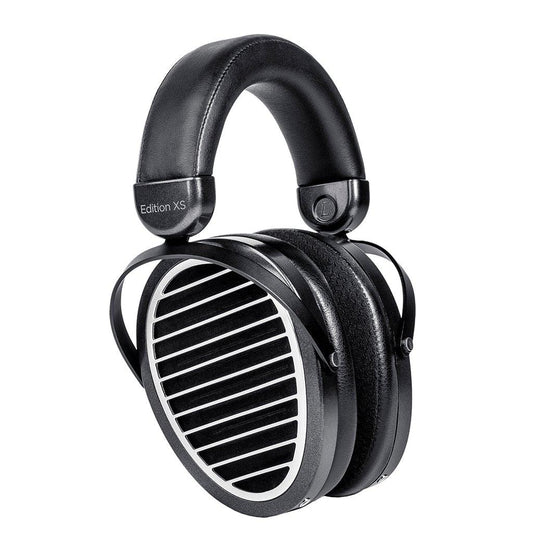Moondrop Cosmo: Surprising Sound, Blunderous Build
With Cosmo being their most expensive over-ear headphone to date, Moondrop is clearly aiming to provide something different sounding from their prior designs, while perhaps not trying to shirk their established visual design language. But do they do enough to make Cosmo a headphone worth recommending? Let's discuss it.

The Moondrop Cosmo is the newest over-ear headphone from the de facto king of the “chi-fi” product class. With Cosmo being their most expensive over-ear headphone to date, Moondrop is clearly aiming to provide something different sounding from their prior designs, while perhaps not trying to shirk their established visual design or build language.
Cosmo was a headphone that many friends were surprised I chose to review, since I tend to struggle with the treble elevations some planar magnetic designs have. However, I was making an educated guess that Cosmo would be different from both Moondrop’s prior planar designs, as well as most planar designs that I’ve tried.
Now that I have it in for review, I can confirm that my suspicions were correct. Cosmo sounds more palatable to me than a lot of planar magnetic designs historically have… but that doesn't mean it’s without its caveats or asterisks that people need to know about before buying. So without further ado, let’s get into it!
What we like
- One of the few planar magnetic headphones with treble that works well on my head
- Mostly solid midrange tuning & good midrange integration with treble
- Fairly leak-tolerant design
What we don’t like
- Lacks bass presence
- Minimal range of headband adjustment, loose fit on small & medium heads
- Included accessories are lacking
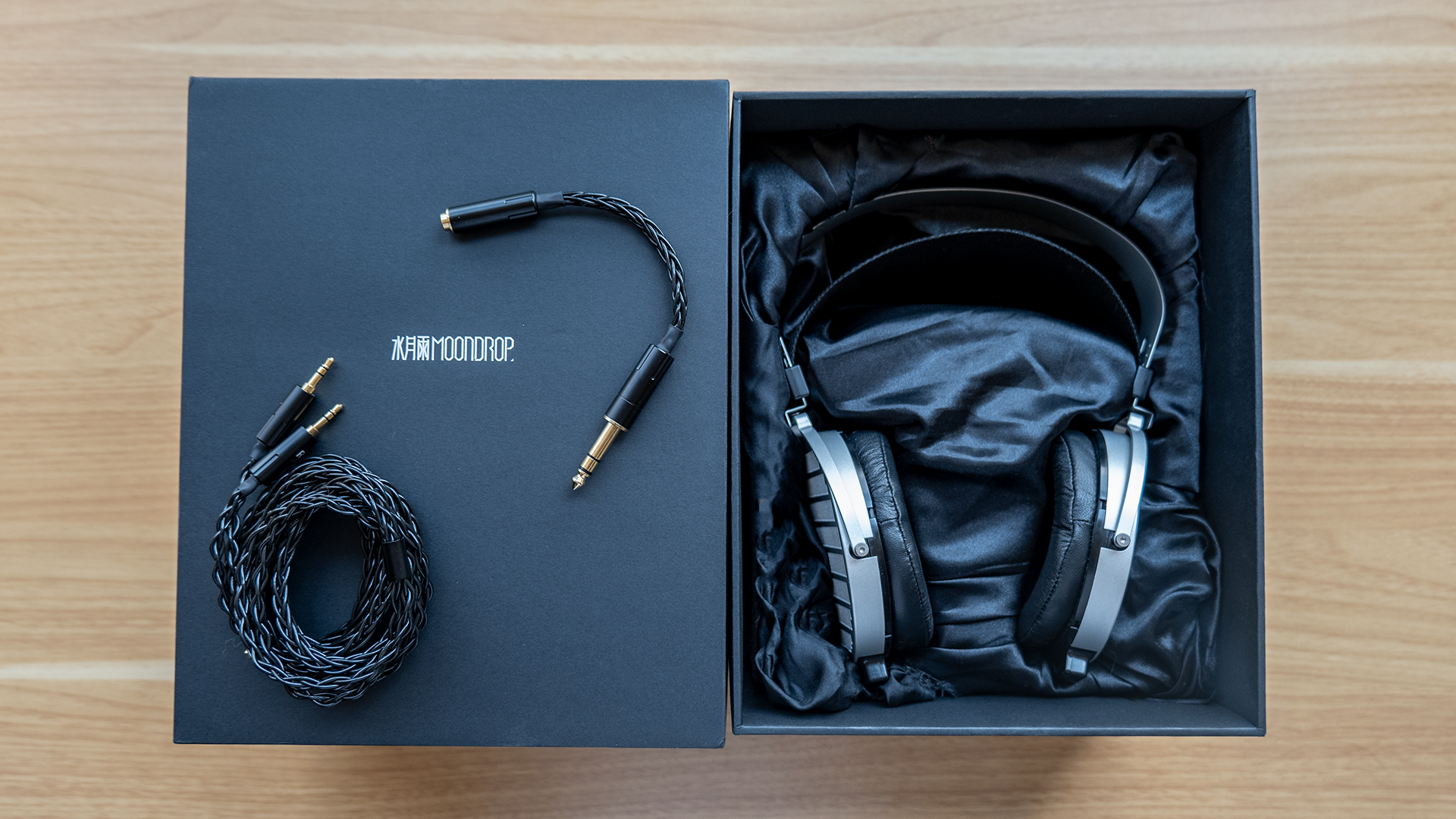
Build, Comfort, and Design
Readers with experience with Moondrop’s former planar magnetic designs like the Para and Venus will likely not be surprised when met with the Cosmo, as it has a very similar all-metal construction with round leather earpads and a suspension strap.
As far as the visual design language is concerned, I preferred the “art deco” earcup visuals of the Venus over the other two, but Cosmo isn’t bad looking by any stretch. It has a more “cheese grater-y” look to the cups, but this is arguably more congruent with the rest of the design such that overall I’d say it looks fairly cohesive, if larger and blockier than I’d prefer.
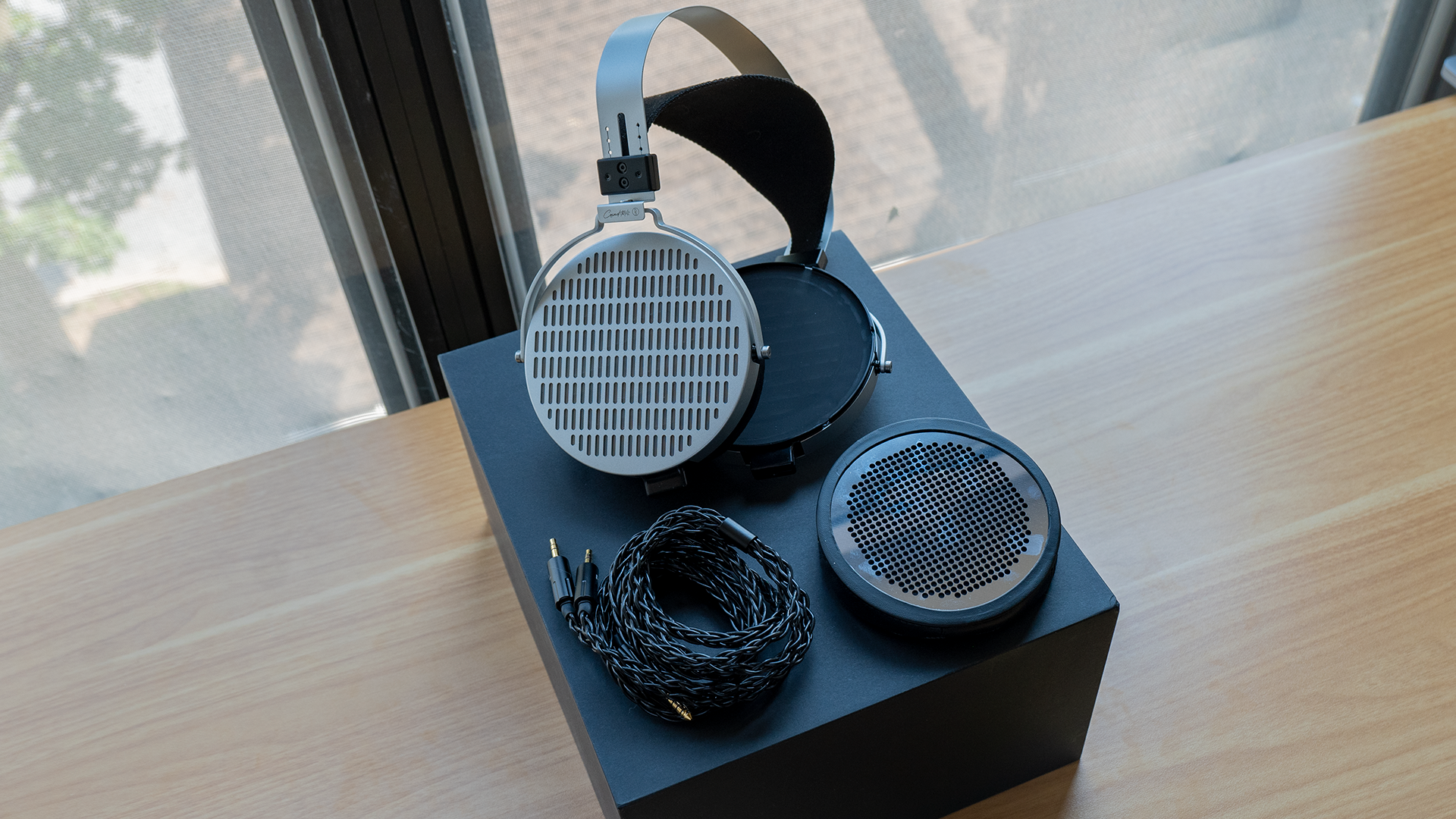
One thing I really like about the Cosmo is its ear pad retention design. It uses a removable magnetic metal grill that you can place inside the ear pad that then gets affixed magnetically to the baffle, which guarantees seal but also relatively painless removal/replacement of pads if necessary. This is one of the uncontroversially great things about this design, and I wish more headphone manufacturers did this. Big thumbs up.
In terms of comfort, there were commonly-reported issues with this type of headband when it appeared on the Para and Venus, and Cosmo is plagued by similar issues. The headband extension mechanism is rather stiff but also inconsistent, which makes height adjustment a bit of a pain. I actually prefer the simpler strap of this headband vs. the padded strap of the Venus, though. I find the best thing a suspension strap can do is conform to the shape of the head with as much surface area as possible, and Cosmo’s strap actually does this rather well and I don’t get any discomfort on the top of my head.
But the bigger issue has to do with the size of the headphone strap and the amount of extension: This headphone is seemingly made solely for people with massive heads, and is only barely usable on the smallest setting for me (where it still feels incredibly ill-fitting). To that point, I brought this headphone to a meet-up last month with a few audio friends, and among the 5 people there, none of them were able to wear the headphone comfortably on anything bigger than the smallest setting.
This hugely impedes comfort, as the headphone feels very unstable and cantankerous when used, making simple things like looking down or drinking from a glass without a straw damn near impossible to do without the headphone feeling like it’s going to fall off. This alone made using this headphone incredibly frustrating, and is enough for me to say that unless a reader has a very large head, Cosmo is something they should skip. If it were a sound issue, things like EQ or pad rolling could help soften the edges or make the experience more palatable… but you can’t EQ comfort.
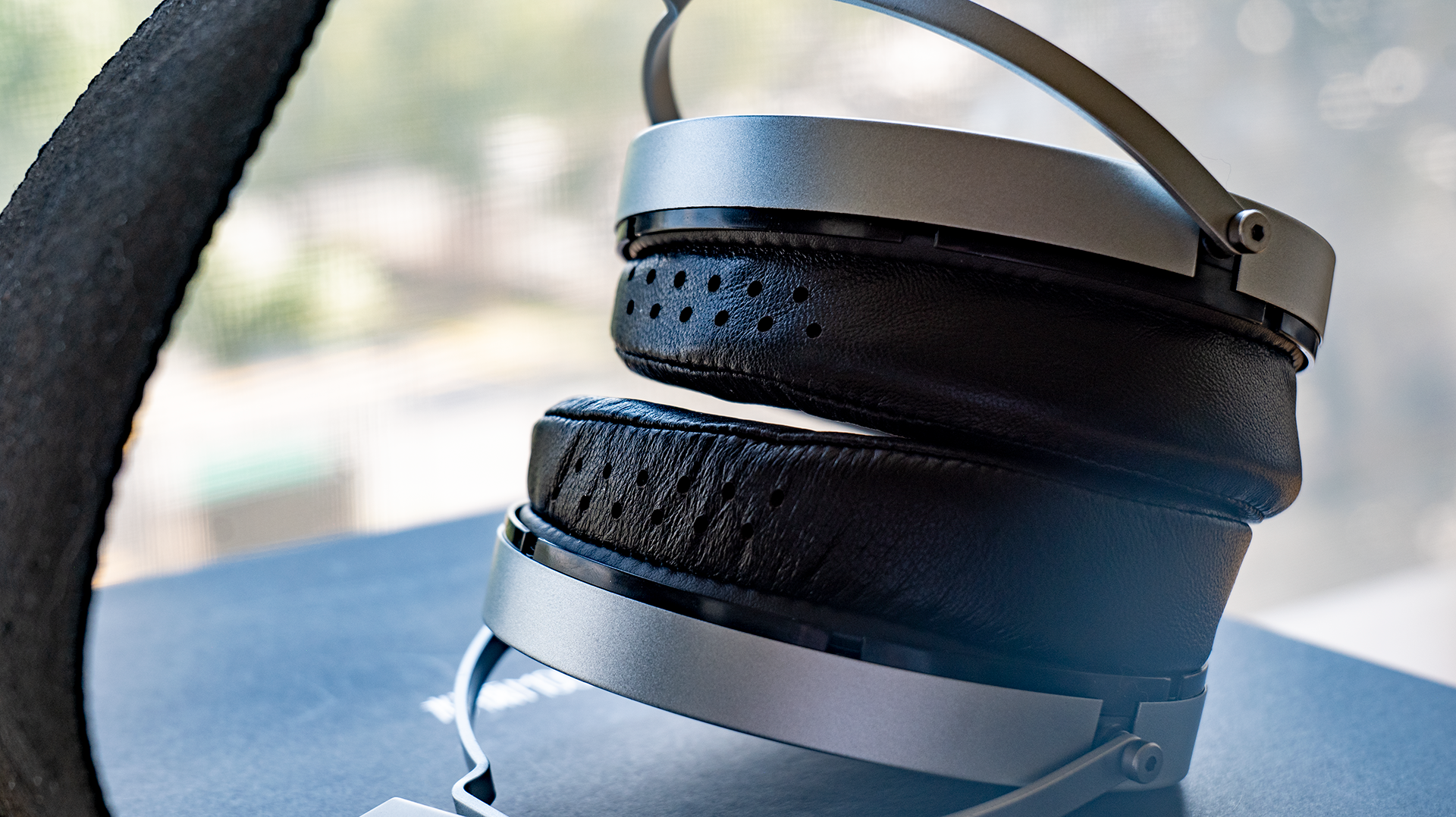
In terms of build itself, the aforementioned headband adjustments feel a bit inconsistent in tension, such that I’m a bit worried that with time the “clicks” of the height adjustment will wear down and become basically useless. Many have already reported such a thing with the Venus and Para, so I’d advise people proceed with caution in that respect as well.
Lastly, the included accessories are a stock 4.4mm Pentaconn cable (terminated in dual 3.5mm TRS connectors on the headphone side), and a 4.4mm female to 6.3mm male TRS adapter. The cable is unfortunately fairly heavy and plasticky. It doesn’t have any issues with pliability, as its rather “soft” in terms of memory, and it’s not especially microphonic, but I immediately elected to use the Edition XS cable I’d had on hand just due to the added weight being a bit much and not having any 4.4mm sources I enjoy using.
Another note: I hate when the only cable a headphone comes with is 4.4mm Pentaconn. I get that this is a planar magnetic headphone, so the drive requirements and target audience means buyers are likely to have a 4.4mm source, but it’s always incredibly annoying to have to comb through my stuff to find something that has a 4.4mm input when I mostly use portable sources like the Qudelix 5k (which only has 2.5mm balanced and 3.5mm stereo jacks).
Overall, Cosmo looks pretty good, but the ergonomics are bad, the build inspires little confidence, and the included accessories aren’t very good either. Not a great start.
Frequency Response and Tonality
Writers Note: I usually would separate Bass, Midrange, and Treble into distinct sections, but I’ve learned that this might reinforce a wrongheaded idea—areas of the FR should be analyzed as a whole, instead of as parts, because most instruments and sonic elements in recorded music span more than just one of these regions.
The more planar magnetic headphones I review, the more I realize that descriptions of “the bass” are largely actually to do with what’s going on above the bass, not just the bass region itself. So in terms of the measured result here, we see the bass extends flat into the sub-bass, as is typical of this kind of design, but it is significantly less bassy than I’d prefer because of how the bass relates to the midrange above it. While the amount doesn’t always mean much for how I qualitatively perceive the bass of a headphone, in this case it definitely has an effect.
I’d say the same regarding, for example, the older Audeze LCD series designs or certain electrostatic headphones; the response here really isn’t bassy at all despite the extension all technically being there. If anything I think the lack of bass is probably my biggest gripe with this headphone, because it significantly lacks in density and weight (and because I actually don’t dislike the rest of the response here).
Since for most of the bass instruments I think most of the qualitative descriptions I’ll have will have to do with midrange and how it relates to (and overshadows) the bass, let’s move to the midrange, because Cosmo’s midrange pleasantly surprised me. While it may not be in the discussion for the best of the best, I actually think there’s a lot here that people might like.
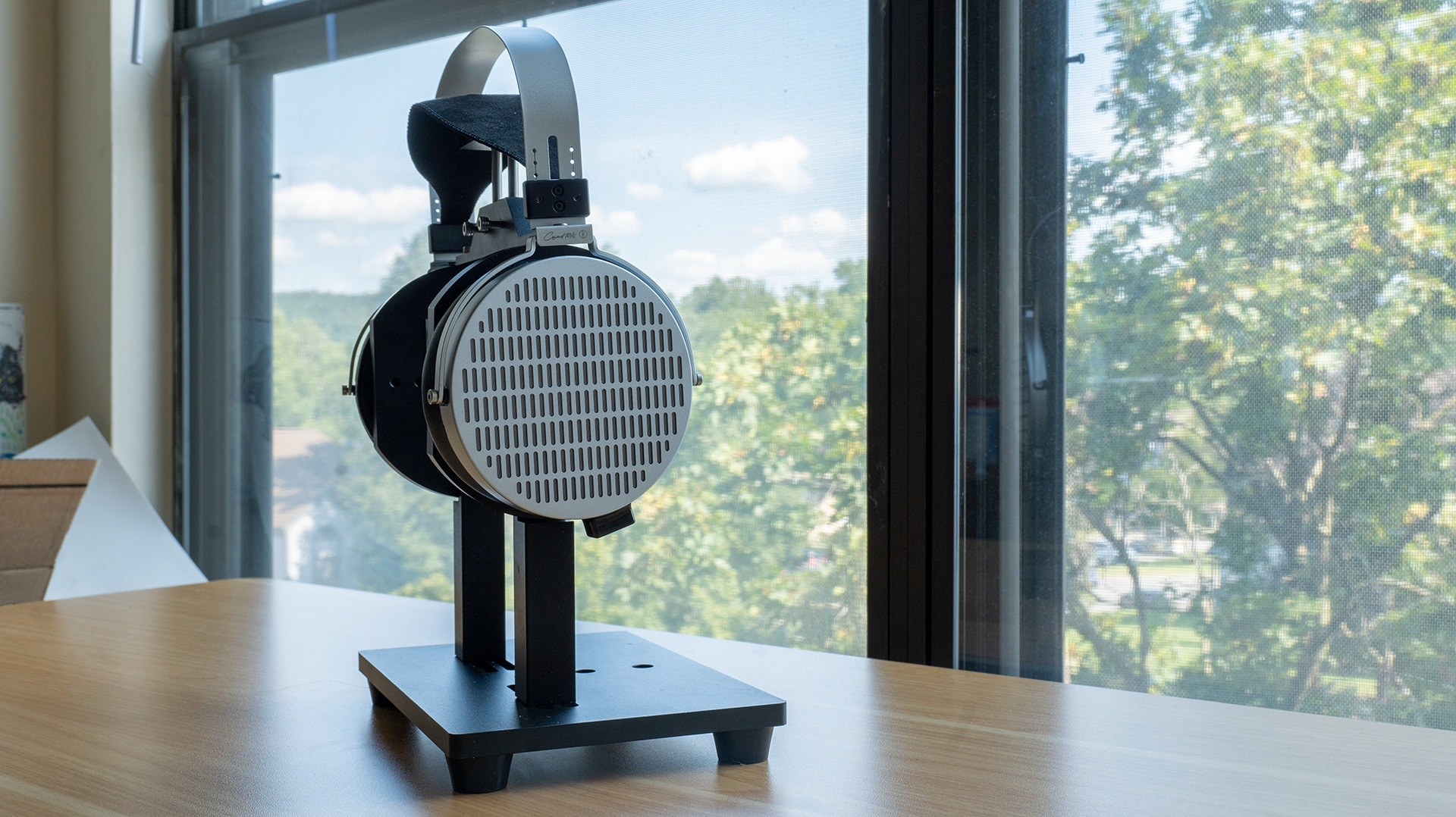
Along with the bass, the lower and center midrange are linear, being essentially “raw DF-neutral” up to about 800 Hz. This isn’t necessarily a good thing. Since there’s neither a bass rise nor a downtilt in the midrange, this can make certain elements sound a little boxy and thin, as overtones are emphasized above fundamentals. Snare drums are the most noticeable issue, since they tend to sound a bit too clacky and small, even sounding kind of like they’re miked from farther away at times.
But for the most part the lower midrange deficit isn’t obtrusive and doesn’t come across as overtly colored. For things I’m really timbrally-sensitive to like voices and pianos, they rarely if ever felt like something was glaringly wrong, just mildly on the thin side.
However, above 800 Hz there’s a minor elevation until around 1.2 kHz that brings the beginning of the eargain rise slightly north of even Diffuse Field, and here’s where the first potentially noticeable midrange coloration occurs… though not necessarily for the worse. This feature didn’t jump out at first, but with more time it became noticeable due to how it—along with the rest of the “DF-neutral” lower midrange and bass—made this headphone sound particularly thin.
This is where I’d say the bulk of my issue with this midrange lies, and this feature will likely be responsible for many finding Cosmo bass-deficient and cold. The forward center-midrange tilts the response even more towards overtones such that the character of bass instruments gets a push to texture & “speed” instead of size or weight. Electric and acoustic guitars seem to “cut” through their mixes a little more, but have a slight nasality to their response that, while certainly noticeable as a coloration, isn’t always unwelcome either.
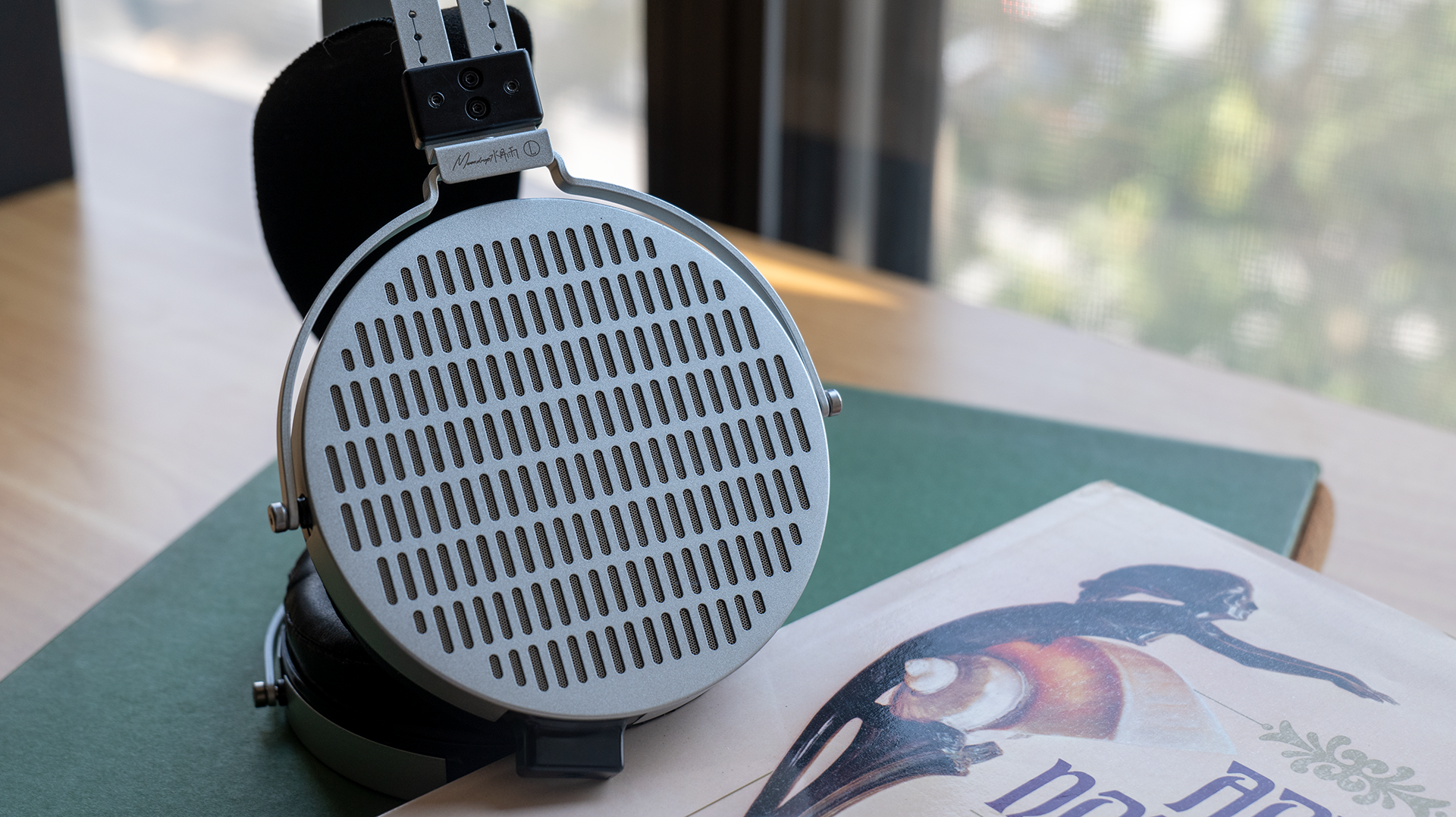
For example, this ~1 kHz push often has a positive effect on kick drums, which sound more impactful and snappy in a way that I quite liked on many recordings. This enjoyable quickness comes at the expense of the “beef” and decay of kick drums, and makes them sound a bit smaller than normal, but it’s a tradeoff I’m happy to make sometimes since I’m not really what people would call a basshead. Additionally, instruments seem to have a bit more distinctness and separation thanks to this elevation.
The subsequent “ear gain” rise is characterized by a 2 kHz recession, which helps level out the intensity from the 1 kHz rise with some much-needed warmth, but also adds a bit of a muted character to the rest of the midrange. Any textural benefits afforded by the rest of the rather lean mids are partially occluded by this dip, and the sense of clarity suffers as a result. I noticed it most on electric guitars, where they sound rather “vocal” in their timbre, but pick attack is muffled a fair bit.
The upper midrange here is actually kind of surprising, given most planar magnetic headphones tend to either drastically undershoot, overshoot, or delay the rise in this region too much. But with Cosmo, it’s a bit soft here but pretty damn reasonable overall. Most of the softness or hardness issues come from the midrange below, but the 3-5 kHz region is handled almost exactly how I’d like for this kind of presentation.
For the most part I think Moondrop should actually be pretty damn proud of the midrange-to-treble integration here. While it’s not perfect, or even great, I had very few glaring issues with this area of the response. In fact, I can’t really think of a planar magnetic headphone I’d take over the Cosmo for midrange and treble integration alone, as most of them are much more cloyingly muffled or glarey here. Keep in mind that again, I’m not really someone who goes for super bassy or ultra-warm tunings with a downtilt in the bass and midrange. I do happen to prefer a darker treble response though.
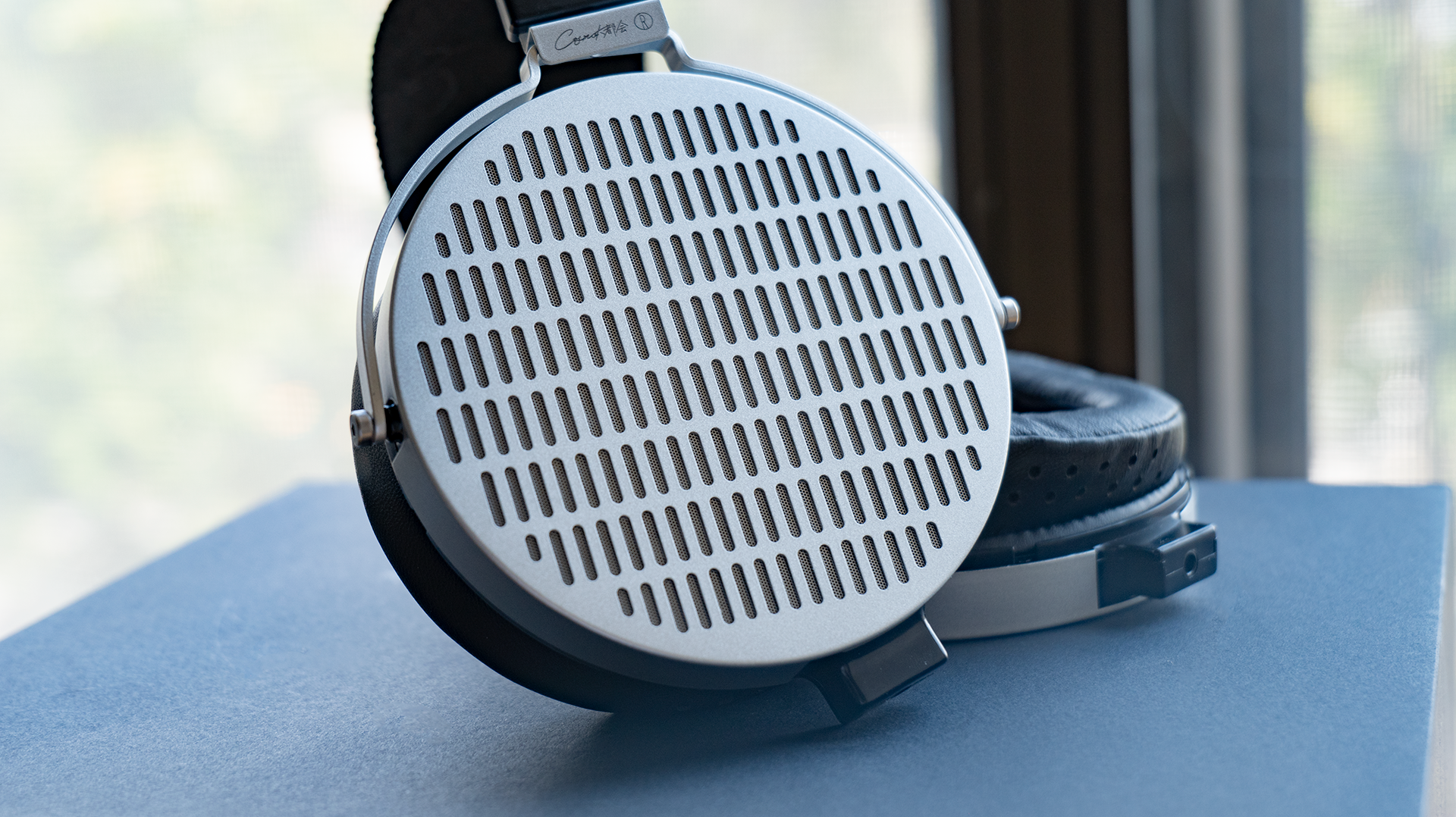
Continuing the theme of pleasant surprises, Cosmo is one of the only planar magnetic headphones I’ve put on my head that I can say I liked the treble presentation from. It doesn’t have the typical elevations in the > 10 kHz region, and its transition from the upper midrange to the lower treble is on the normal side of normal, such that the response is—for the most part—coherent and well-integrated for me.
Vocals don’t have any noticeable sibilance or edginess, snare drums have roughly equal amounts of stick attack crack and chain rattle, sounding for the most part how I’d expect with maybe a slight bias towards darkness. Hi-hats and ride cymbals have perhaps a little extra shimmer, but overall are well-balanced between click, ring, and sizzle. Synthesizers with a lot of high overtones like sawtooth or square wave synths sound properly extended and full while not sounding overly crispy or digitized.
The treble being good for me does unfortunately mean that Cosmo might be a bit too dark for some people, especially people who would buy Cosmo looking for the airy, sheeny presentation that’s typical of planar designs like this. However, for me Cosmo would be one of the better planars out there on its treble merits alone, but the fact that the midrange is also rather reasonable means that I can’t really think of a planar headphone near its price that really offers a similar sonic package, which in some ways alone justifies its existence on the market—at least for me.
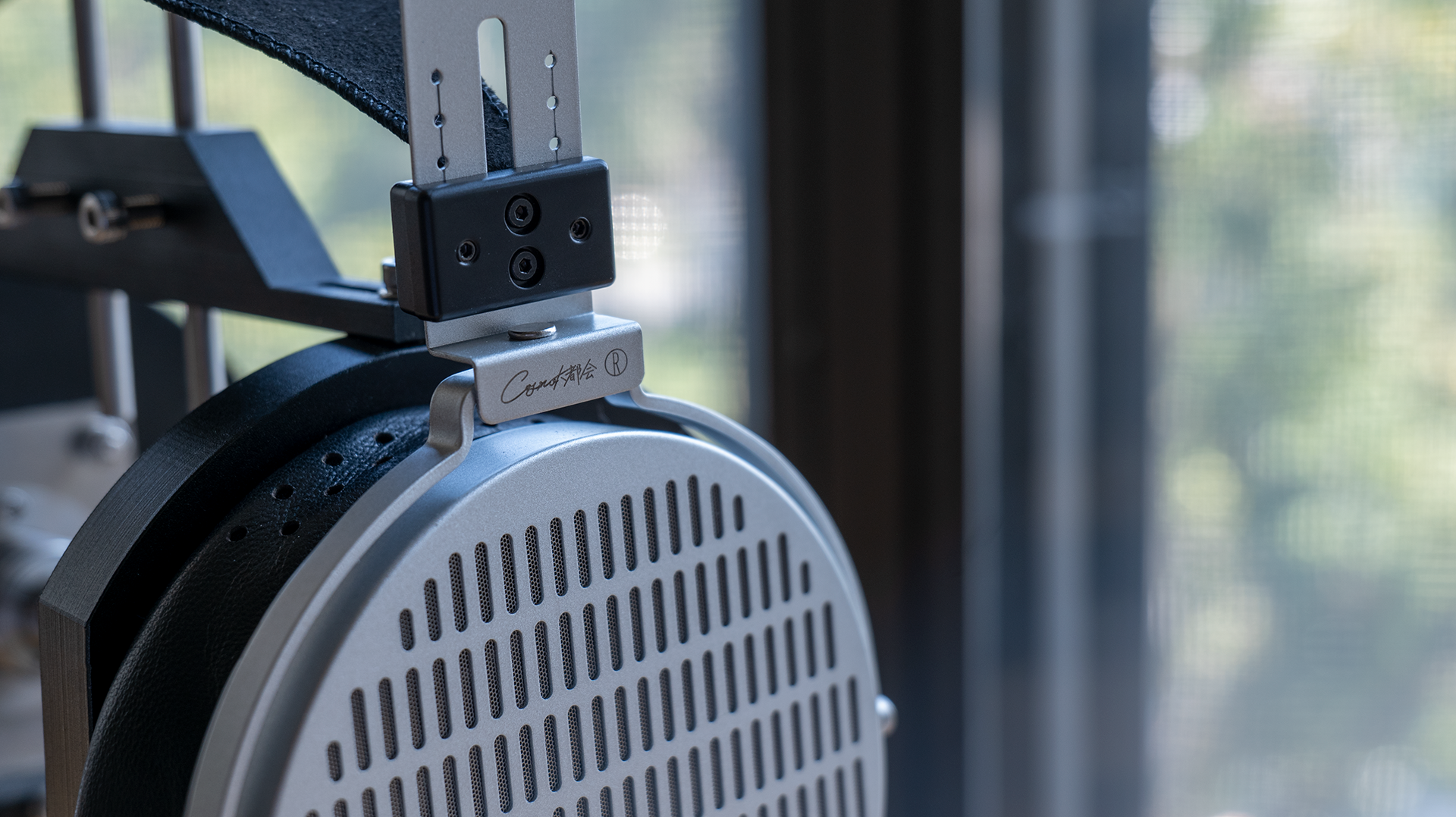
Subjective Impressions
Due to being a bit of a nonstandard tuning for this driver type, I think the people who are looking for the typical planar package of “soundstage” and “detail” are likely going to be a bit disappointed with Cosmo… however, this does mean its a way better fit for the kind of presentation I go for than most planars.
While it doesn’t have an overwhelmingly detail-forward presentation, I do find it to be very “even” in terms of how elements of the music are presented. I don’t get any tinkly tiny cues being brought to prominence by a treble spike screaming for my attention, but I do get an even sonic presentation that feels biased towards the midrange in a way that I, as an HD 600 or HEDDphone V2 enjoyer, can get behind. While I don’t get the panoramic, tall, or massively open sense of space typical of other planar designs out there, I do get a sense of ease and envelopment from the music that makes it easier to get lost in my listening time than it would be with most other planars & their associated treble quirks.
What people often call “dynamics” is gonna be a bit of a tossup with this one. For me, Cosmo’s definitely not a slammy, heavy, or traditionally punchy headphone. Because it doesn’t feel like it’s swinging around large amounts of mass with sonic movements, I’d say the people that key their definition of dynamics to that quality are also likely to be disappointed here.
However, Cosmo is certainly one of the few headphones that I’ve found that adopts a philosophy of being a “fast” presentation without having the usual treble-forward presentation to match. Additionally, it’s one of the few planars where I feel the sense of contrast between sonic elements themselves, as well as the contrast between gradations of volume is well-delineated.
I don’t necessarily hear things as being compressed in terms of the distribution of volumes available, though again I think some people may subjectively feel things don’t jump out at them enough because the tuning is on the plain and unexciting side.
Overall I don’t necessarily think Cosmo is subjectively special, and I think at its price it’s likely going to be regarded as a miss for most people who want the typical package that planar magnetic headphones usually have. However, it’s meaningfully better than most planar magnetic headphones I’ve heard for the kind of presentation I go for, which is focused more on things that matter to me like evenness, lack of masking, and timbral/dynamic contrast.

Comparison to Hifiman Edition XS
The Edition XS has a pretty big leg up on Cosmo for comfort and accessories, because it fits on my head and has a much better feeling cable. However, it certainly isn’t winning any awards for comfort on its own, as the headband that Hifiman uses for Edition XS is among my least favorite headbands that exist on today’s market. Its padding is stiff, and it doesn’t conform at all to the shape of the top of my head, so I get a pretty bad hot spot in the middle of my scalp almost immediately while using it.
That said, it’s still a more stable design than the Cosmo, and unlike Cosmo, users have the option to buy or print a Capra Strap that takes the Edition XS from a fairly uncomfortable headphone to one of the most comfortable headphones out there.
Sonically, I think the only thing I overwhelmingly prefer about the XS is that its bass is a much more noticeable contributor to the sound profile. From around 1 kHz down, it mostly conforms to a uniform downward tilt and has great sub-bass extension. So while it’s not a signature I’d call “bassy”, it’s definitely got more note weight and tonal warmth to its presentation, and that’s still something I feel Cosmo significantly lacks.
However, I think I prefer Cosmo everywhere else. Sure, the 1 kHz emphasis makes things sound a bit bass shy and vocalic, but overall the midrange sounds much more present, coherent, and visceral compared to the Edition XS’s “distant” presentation. By contrast, the typical-of-Hifiman 2 kHz dip causes the midrange and bass of Edition XS to be just a bit too warm for me.
Above this, the Edition XS has what to my ear sounds like too much of an elevation between 3-5 kHz, which highlights the breathiness of vocals and paperiness of snare drums too much for my taste. By contrast, Cosmo is much more reasonable and “HRTF-shaped” such that even if the overall upper midrange is a bit relaxed, I don’t get nearly the sense of “crash” or messiness from its upper midrange to lower treble transition here.
And lastly, the Edition XS has a bothersome elevation on my head around 11 kHz. Many headphones have an elevation in this region for me, but planar magnetic headphones—specifically Hifiman’s designs—tend to aggravate this region the most. Cosmo doesn’t have much of an elevation here at all, though. It has a little bit of an air spike above this (around 13 kHz for me), but overall Cosmo definitely isn’t a headphone I’d call bright or airy, especially not cloyingly so like the Edition XS is for me.
Edition XS is an amazing budget pick for a planar magnetic headphone, and at its current price it really makes a lot of Hifiman’s other offerings like the Arya lineup (which is generally even brighter) a lot harder to recommend. I’d happily recommend Edition XS to people—provided they get a Capra Strap and either know they want a brighter sound, or are game to try EQ.
But for a stock experience, I think the Cosmo sounds a lot more normal. Normal in a way that may be less exciting for some than Edition XS, but normal nonetheless. Unfortunately the comfort is just so poor that Edition XS wins by default, even if its the headphone I prefer significantly less sonically.
Hifiman Edition XS Headphones
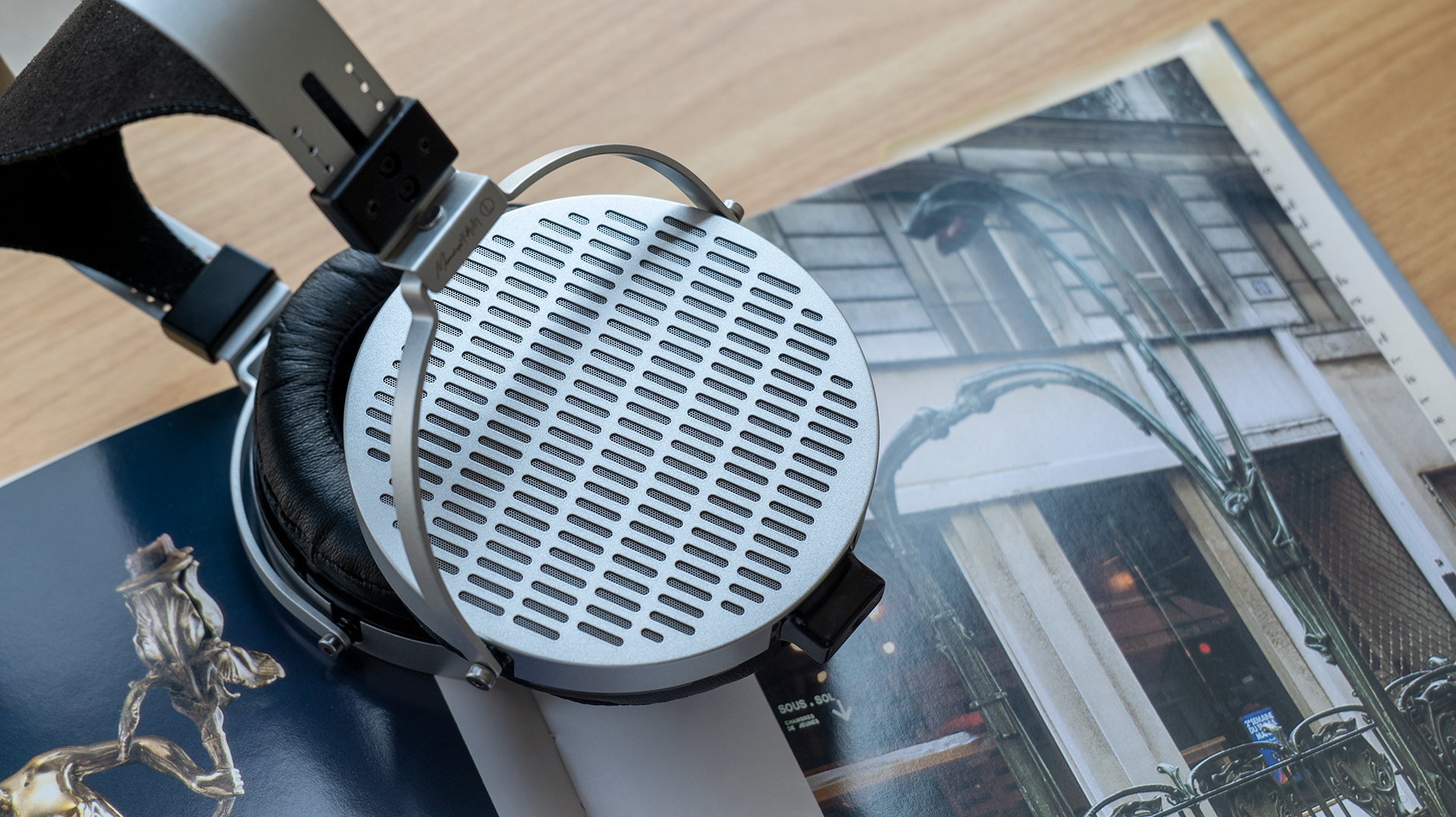
Conclusion
Cosmo is one of the few planar magnetic headphones I’ve ever heard that I’d recommend based on its stock sound profile… or it would be, if the ergonomics weren’t an absolute dealbreaker for anyone except people with large heads.
Unfortunately Cosmo serves as a perfect example of why sound quality isn’t the only thing that matters. I could and did listen to this headphone for extended periods of time with mostly no sonic issues and plenty of notably enjoyable moments (it did really well with already-bassy music) but had to do so while sitting completely still and being extremely aware of the headphone being on my head the entire time.
Even if this is one of the few times I feel like a planar magnetic headphone is tuned well enough and uniquely enough to be a solid offering in this market, the comfort is so bad that I can’t really recommend anyone buy Cosmo, whether they’d like this kind of sound or not.
For those who are still interested in trying Cosmo despite the build/comfort woes, keep in mind that my preferences trend to the dark side of things, and Cosmo is likely darker than most planar magnetic headphones out there save for recent offerings from Audeze.
While I like this headphone, that’s precisely because it is a presentation atypical of most headphones with this driver type. If you want a more typical planar magnetic presentation, the aforementioned Hifiman Edition XS is a headphone I recommend, even if I don’t like it much without EQ or an aftermarket headstrap.
Hopefully with the next one Moondrop gives more attention to build, comfort, and accessories, because they’re definitely on track to provide planar magnetic headphones that deserve to exist in this market. Just gotta make sure they’re ones that people like me can actually wear comfortably first.
If you have any questions or want to chat about this article, feel free to start a discussion below on our forum, or ping me in our Discord channel, both places where you can find me and a bunch of other headphone and IEM enthusiasts hanging out and talking about stuff like this. Thanks so much for reading. Until next time!
